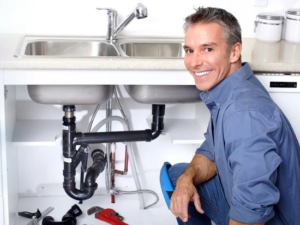Solar panels convert sunlight into clean, usable electricity using a process called the photovoltaic effect. They contain cells that absorb the sun’s energy to create direct current electricity, which devices like inverters convert into alternating current electricity.

Unlike fossil fuels, solar energy is a renewable resource. It also reduces dependence on utility providers and is environmentally friendly. For professional help, contact Solar Companies Helena MT.
The cost of solar panels is a major investment for any homeowner, but many financial tools are available to make this energy-saving upgrade more affordable. The initial price tag is often offset by federal and local rebate incentives, which dramatically reduce the upfront costs of installation. Once operational, the system pays for itself in monetary savings over time. Moreover, solar systems have been shown to increase home values by 4.1% on average.
The equipment itself typically accounts for 10-20% of the total cost. The most important component is the silicon cells that form the core of a solar panel. These are arranged in an array and enclosed in an insulative frame and protective back sheet to protect against high heat and humidity. Two types of silicon cells are available: monocrystalline and polycrystalline. Mono cells are made from a single solid silicon crystal, which allows more space for electrons to flow and is generally more efficient. Poly cells, on the other hand, are crafted from multiple shards of silicon that are melted together. Despite their lower efficiency, they are typically less expensive than monocrystalline alternatives.
Other significant equipment costs include an inverter, which converts DC power from the solar panel into AC electricity for your home. A quality inverter can cost up to $3,000 for a 6kW system, but it is essential to your system’s long-term performance. Mounting hardware, such as racks and bolts, can add up to $400-$800 for a residential installation.
In addition, homeowners should factor in any potential maintenance or replacement costs, such as the cost of replacing a damaged panel. However, it is worth noting that the cost of replacement solar panels has decreased significantly over the years due to technological advances and reduced manufacturing costs.
One way to estimate your solar energy costs is to look at your historical electricity consumption, usually listed on your utility bill in kilowatt-hours (kWh). A household with a high energy usage–for example, because of a large appliance or an electric vehicle–will require a larger system and may incur higher installation costs than a household with low energy usage.
Efficiency
The efficiency of solar panels depends on several factors, including the amount of sunlight available in a particular area. In addition, a solar panel’s orientation and tilt affect its efficiency, as does the weather conditions. A study by Sandia National Laboratories found that the average solar panel’s performance drops less than expected over time. However, the results were based on a limited number of sites and did not take dew point temperature into account.
A solar panel’s performance is affected by the type of semiconductor material it uses. The most common material is crystalline silicon, which has been used in more than 90% of PV systems worldwide. This semiconductor has a crystal lattice that gives electrons an organized structure, making it easier to convert light into electricity.
Regardless of the type of solar panel you choose, it is important to know how much power your system will produce on average. This information will help you decide whether or not the system is right for your home. You can find this information by looking at your utility bills or using a solar energy calculator. The calculator will provide a breakdown of your annual consumption in kilowatt-hours (kWh).
If you are considering investing in a PV system, it’s essential to understand the factors that affect its efficiency. This includes location, the quality of the components, and the installation process. The best systems are built with high-quality materials and designed to meet the needs of your specific environment. The system should also be sized to generate the right amount of energy for your home. Excess energy can be stored in a battery or fed into the grid for credits.
The quality of the solar panel’s components and materials also influences its lifespan. For example, lower-quality aluminum frames are more likely to break. Thinner frames are also more susceptible to heat damage. In addition, poor workmanship can accelerate the aging process. Solar modules must be properly installed and regularly inspected for signs of damage.
Some solar panel manufacturers have incorporated temperature coefficients into their design to reduce the rate of degradation. This is especially important for PV installations in hot climates. The temperature coefficient indicates how much a panel’s maximum power output decreases as the temperature increases. The lower the temperature coefficient, the better.
Maintenance
While solar energy is a green, environmentally friendly way to power your home, it’s not without some associated maintenance costs. Depending on the type of system, maintenance can range from routine cleanings to inverter replacement and battery replacement. These expenses can add up over time, but a well-maintained solar panel will be able to produce more electricity and save money in the long run.
The most common maintenance task involves occasional cleaning. Dirty panels lose about 30% of their energy output. Thankfully, this can be easily addressed with a garden hose and soft brush or scrubbing pad. It’s a good idea to do this once or twice a year, especially if you live in a dusty area or right by the beach.
In addition to regular cleanings, you should also keep an eye on your solar panels’ production efficiency. While slight variation in output is to be expected, a sudden decrease in efficiency could signal that something is wrong. A professional solar inspection can help catch problems early, saving you money in the long run.
Solar panel maintenance should also include a check of the roof, wiring, and connections to ensure they are safe. During a maintenance visit, professionals will look for signs of corrosion or other damage, and make sure that everything is in working order. These checks can be performed at a reasonable cost by a qualified installer, or can be included in a maintenance support package.
A solar maintenance support package can take the hassle out of maintaining your new energy system. It can include a full maintenance and cleaning service every year, as well as free hardware replacements when your inverter or batteries reach the end of their life cycle. In addition, a maintenance package can provide peace of mind by giving you access to a 24/7 emergency line and a physical on-site technician for any repairs that can’t be solved over the phone.
Despite their impressive durability, solar panels are still vulnerable to the elements. A quality system will be able to withstand most of the weather, but it’s important to plan for unexpected events like high winds or hailstorms. Having the right insurance in place can help you recover from these surprises and protect your investment.
Installation
Solar panels are a significant investment that require careful attention and a range of technical skills. But they can help homeowners reduce their energy costs and have a positive impact on the environment. In addition, they can add value to homes and increase their resale value. While the initial installation costs are high, they can be offset by local incentives and long-term cost savings.
The first step in determining the right size of solar panel is to determine your monthly and annual energy consumption. A reputable installer will use your energy bills to assess this and provide recommendations on the appropriate number of solar panels to install at your home or business. They may also ask to review your previous energy bills to more accurately plan for the size of your system.
Depending on the manufacturer, solar panels come with different product warranties and performance guarantees. Product warranties guarantee the physical integrity of solar panels and ensure that they operate according to their specifications for a certain period of time. They are typically good for 10 to 25 years.
Performance warranties (also known as power output warranties) guarantee a minimum level of energy production over the expected lifetime of the solar panel. These warranties do not cover maintenance or other repairs, but they do offer protection against unforeseen issues that affect the power generation of solar panels.
A solar panel warranty is a great way to protect your solar investment. However, it’s important to understand how these warranties work before signing any contract. Moreover, it’s important to keep detailed records of all maintenance activities, inspections, and repairs. Failure to do so can void your warranty and leave you unprotected in the event of any problems.
Solar panel performance warranties and guarantees are based on specific test results under ideal conditions. However, there are several factors that can significantly affect the energy output of your solar panel, including the positioning and angle of your solar panel, the type of roof, and the sun’s position in the sky at a given time. The best way to make the most of your solar panel’s potential is to properly align them with your location and optimize their angle, which can increase power production by up to 30%.




